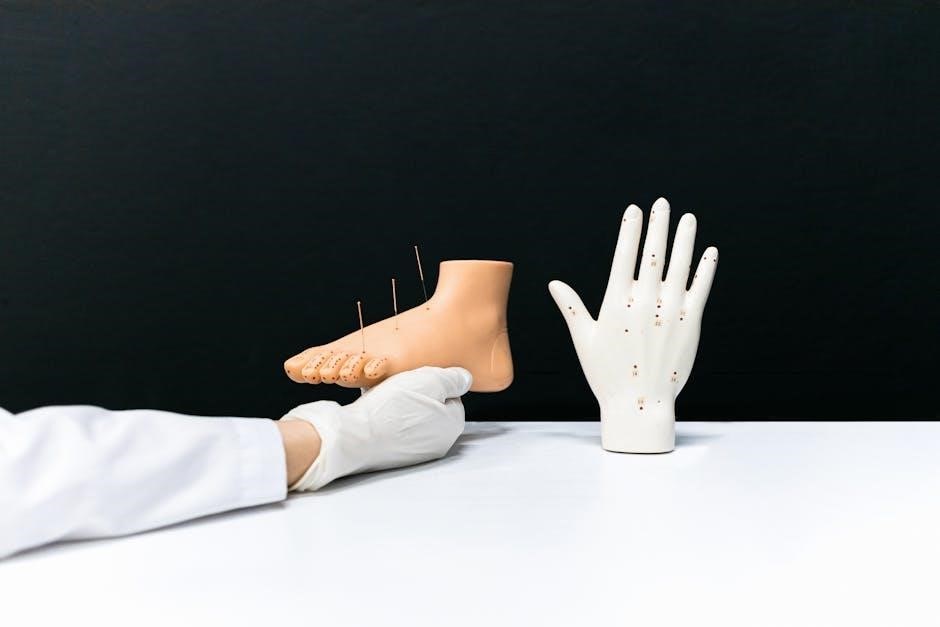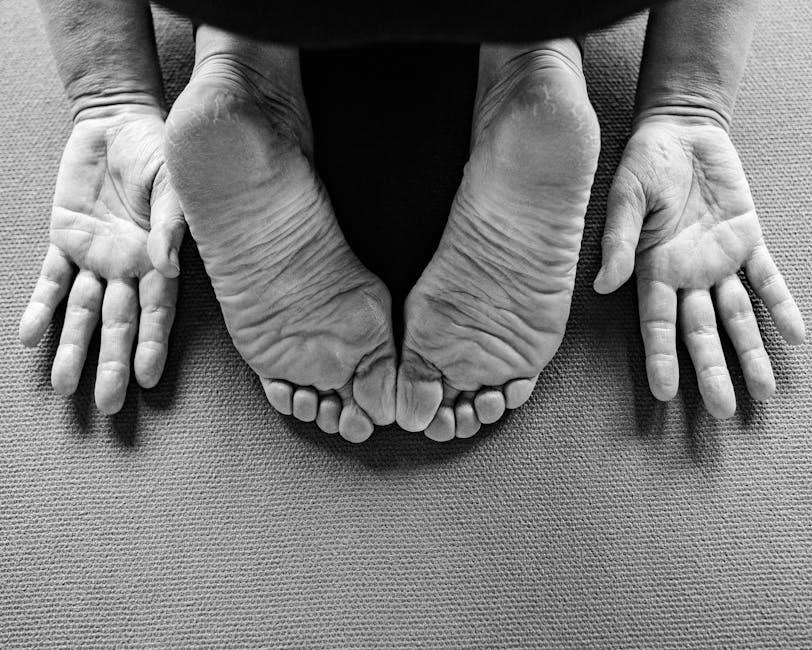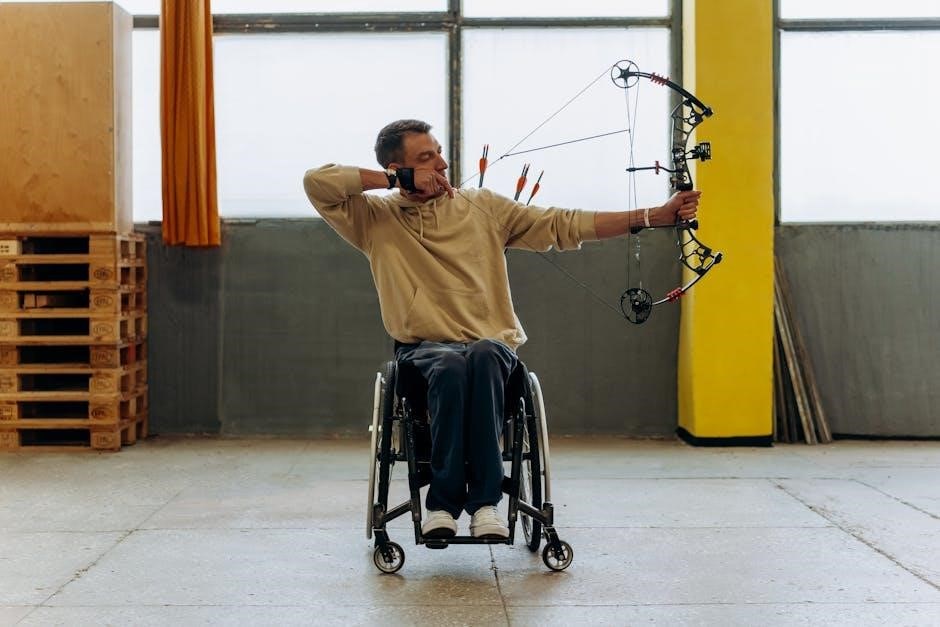
guide to physical therapy practice
Physical therapy is a healthcare profession focused on improving mobility, strength, and function. It addresses musculoskeletal, neurological, and cardiovascular conditions through evidence-based interventions, promoting optimal well-being and independence.
1.1 Definition and Scope of Physical Therapy
Physical therapy is a healthcare profession focusing on improving mobility, strength, and function. It addresses musculoskeletal, neurological, and cardiovascular conditions using evidence-based interventions. The scope includes diagnosis, treatment, and prevention of movement-related disorders, promoting optimal well-being and independence. Physical therapists use manual therapy, exercises, and education to enhance patient outcomes, guiding individuals toward recovery and long-term health management.
1.2 Importance of Physical Therapy in Healthcare
Physical therapy plays a vital role in healthcare by enhancing mobility, reducing pain, and improving overall function. It addresses musculoskeletal, neurological, and cardiovascular conditions, promoting recovery and preventing future issues. Evidence-based interventions reduce medical costs and reliance on medications, offering a personalized approach to patient care and supporting long-term health management effectively.
The APTA Guide to Physical Therapist Practice
The APTA Guide to Physical Therapist Practice provides a comprehensive description of the profession, defining scope, guiding patterns of care, and enhancing quality standards for physical therapists and assistants.
2.1 Overview of the APTA Guide
The APTA Guide to Physical Therapist Practice is a comprehensive resource defining the scope and standards of physical therapy. It serves as a foundational document for practitioners, outlining patterns of care and improving quality. Available in various formats, including an online subscription, it provides updated information on the profession, ensuring evidence-based practices and optimal patient outcomes across diverse clinical settings.
2.2 Key Updates in the 3;0 Edition
The APTA Guide 3.0 Edition introduces enhanced standards for physical therapy practice, emphasizing evidence-based care and updated clinical guidelines. It includes revised referral criteria and incorporates standardized outcome measures for consistent patient assessment. Additionally, the guide addresses emerging technologies and innovative patient engagement strategies, ensuring comprehensive and contemporary approaches to physical therapy interventions.

Clinical Practice Guidelines (CPGs)
Clinical Practice Guidelines (CPGs) are evidence-based recommendations for healthcare decisions, ensuring standardized and effective care. They optimize patient outcomes by reducing variability in treatment approaches and improving consistency.
3.1 Development and Grading of CPGs
Clinical Practice Guidelines (CPGs) are developed through systematic reviews of evidence and expert consensus. They are graded based on the quality of evidence and strength of recommendations, ensuring reliability. The process involves multidisciplinary panels and patient input to address specific clinical questions, promoting evidence-based decision-making and standardized care.
3.2 Role of CPGs in Evidence-Based Practice
Clinical Practice Guidelines (CPGs) provide a framework for integrating evidence into clinical decisions, ensuring high-quality, patient-centered care. They bridge the gap between research and practice, offering graded recommendations to guide therapists. By reducing variation in care, CPGs enhance outcomes and support evidence-based practice, ensuring interventions are effective, safe, and tailored to individual needs.

Manual Therapy Techniques
Manual therapy combines movement strategies with hands-on techniques like mobilization and manipulation to enhance joint mobility and reduce pain, addressing musculoskeletal and neurological conditions effectively.
4.1 Definition and Application of Manual Therapy
Manual therapy is a hands-on approach using techniques like mobilization, manipulation, and soft tissue work to improve joint mobility, reduce pain, and enhance functional movement. It integrates with exercise to address musculoskeletal and neurological conditions, promoting optimal recovery and physical function.
4.2 Integration with Exercise and Mobilization
Manual therapy integrates with exercise and mobilization through movement-oriented strategies. Techniques like manipulation and soft tissue work enhance joint mobility, preparing the body for exercise. This combination promotes strength, flexibility, and functional recovery. Regular practice of prescribed exercises at home supports long-term benefits, ensuring sustained progress and improved physical function.

Therapeutic Exercise in Physical Therapy
Therapeutic exercise is a cornerstone of physical therapy, involving planned movements to restore strength, flexibility, and mobility. Tailored to individual needs, these exercises promote recovery and functional improvement.
5.1 Role of Exercise in Rehabilitation
Exercise plays a crucial role in rehabilitation by restoring function, mobility, and strength. Tailored to individual needs, exercises enhance recovery, promote functional improvement, and improve posture and range of motion. Regular physical activity also manages pain, prevents future injuries, and supports long-term health. Incorporating exercise ensures a holistic approach to healing, boosting confidence, and enhancing overall well-being for successful rehabilitation.
5.2 Types of Therapeutic Exercises and Their Benefits
Therapeutic exercises include flexibility, strengthening, balance, and functional activities. Flexibility exercises improve range of motion, while strengthening exercises build muscle endurance. Balance training enhances stability, reducing fall risks. Functional exercises mimic daily tasks, promoting independence. These exercises are tailored to individual needs, fostering recovery, improving mobility, and enhancing overall physical function, leading to better quality of life and long-term health benefits.
Outcome Measures in Physical Therapy
Outcome measures are standardized tools used to assess patient progress and treatment effectiveness. They include functional assessments and patient-reported outcomes, ensuring consistent and reliable evaluation of recovery and rehabilitation.
6.1 Importance of Standardized Functional Outcome Measures
Standardized functional outcome measures are essential for assessing patient progress and treatment effectiveness. They provide consistent, reliable data to evaluate rehabilitation success and inform clinical decision-making. These tools ensure objective, comparable results across patients and settings, aiding in quality improvement and evidence-based practice. They also facilitate communication among healthcare providers and track longitudinal progress in achieving functional goals.
6.2 Tools for Assessing Patient Progress
Tools like goniometry and muscle testing evaluate range of motion and strength, while standardized functional assessments track mobility and daily activity performance. These objective measures help monitor progress, guide treatment adjustments, and ensure evidence-based practice. Regular use of these tools enhances clinical decision-making and improves overall patient care quality, aligning with the APTA’s emphasis on measurable outcomes in physical therapy practice.
Education and Training for Physical Therapists
Physical therapy education emphasizes core subjects like biology, anatomy, and physiology, preparing practitioners to integrate evidence-based practices into patient care.
7.1 Core Subjects for Physical Therapy Education
Core subjects in physical therapy education include biology, anatomy, and physiology, providing a foundation for understanding human movement and function. These subjects support evidence-based practice and clinical decision-making, essential for effective patient care. They also emphasize the development of practical skills necessary for therapeutic interventions. This comprehensive education prepares physical therapists to address diverse patient needs effectively, ensuring they can apply their knowledge in real-world clinical settings.
7.2 Role of Evidence-Based Practice in Education
Evidence-based practice is integral to physical therapy education, fostering critical thinking and clinical reasoning. It teaches students to evaluate research, apply best practices, and make informed decisions. By integrating clinical practice guidelines (CPGs), education ensures future physical therapists deliver care backed by current evidence. This approach minimizes variability, enhances patient outcomes, and prepares professionals to adapt to evolving healthcare demands effectively.
Patient-Centered Care in Physical Therapy
Patient-centered care emphasizes personalized treatment plans, fostering collaboration between therapists and patients. It prioritizes individual needs, preferences, and values, ensuring care is tailored to achieve optimal outcomes and satisfaction.
8.1 Principles of Patient-Centered Practice
Patient-centered practice emphasizes personalized care, focusing on individual needs and preferences. It involves collaboration between therapists and patients, ensuring shared decision-making and mutual respect. This approach prioritizes empathy, cultural competence, and clear communication to foster trust and engagement.
By tailoring interventions to each patient’s unique circumstances, physical therapists promote autonomy and empowerment. This principle ensures care is effective, respectful, and aligned with the patient’s goals and values, enhancing overall satisfaction and outcomes.
8.2 Strategies for Improving Patient Engagement
Effective patient engagement involves setting clear goals, educating patients about their conditions, and encouraging active participation in therapy. Using standardized functional outcome measures helps track progress, fostering motivation. Open communication, empathy, and cultural sensitivity build trust. Incorporating patient feedback and involving them in decision-making enhances satisfaction and adherence to treatment plans, leading to better overall outcomes.

Referral and Collaboration in Physical Therapy
Referral and collaboration are essential for comprehensive care, ensuring patients receive appropriate treatment. Physical therapists work with healthcare providers to coordinate services, enhancing patient outcomes through teamwork.
9.1 Determining Appropriate Referrals
Determining appropriate referrals involves assessing patient needs and aligning them with specialized care. Physical therapists use standardized assessments and evidence-based guidelines to identify when a referral is necessary. This ensures patients receive targeted interventions, enhancing outcomes and streamlining care pathways.
Collaboration with healthcare providers is crucial, as referrals often require interdisciplinary coordination. The APTA Guide emphasizes the role of therapists in initiating referrals, ensuring seamless transitions and comprehensive patient management.
9.2 Interprofessional Collaboration in Rehabilitation
Interprofessional collaboration in rehabilitation involves teamwork among physical therapists, physicians, occupational therapists, and other healthcare professionals. This approach ensures comprehensive care, addressing the patient’s physical, emotional, and functional needs. Effective communication and shared goals enhance outcomes, fostering a cohesive treatment plan. The APTA Guide highlights the importance of collaboration, emphasizing evidence-based practices and patient-centered care to optimize rehabilitation success and improve quality of life.

Pelvic Floor Physical Therapy
Pelvic floor physical therapy addresses pelvic health issues, including pain, incontinence, and prolapse. Techniques like Kegels and manual therapy improve muscle function, enhancing quality of life for patients.
10.1 Addressing Pelvic Health Issues
Pelvic floor physical therapy treats conditions like incontinence, prolapse, and pelvic pain. Techniques include Kegels, manual therapy, and patient-specific exercises to strengthen muscles and improve function. Physical therapists use evidence-based methods to address urinary, bowel, and reproductive health issues, enhancing quality of life through targeted interventions and personalized care plans.
10.2 Home Exercises and Supplementary Techniques
Home exercises, such as Kegels and deep breathing, complement in-office treatments for pelvic health. Patients are taught specific exercises to strengthen pelvic muscles and improve bladder control. Supplementary techniques like biofeedback and lifestyle modifications further enhance therapy outcomes, promoting long-term recovery and independence in managing pelvic floor dysfunction effectively.
Geriatric Physical Therapy
Geriatric physical therapy focuses on managing age-related conditions, improving mobility, and enhancing balance. It addresses hip fractures and other issues, promoting independence in older adults.
11.1 Management of Older Adults with Hip Fractures
Geriatric physical therapy focuses on managing older adults with hip fractures through early mobilization and weight-bearing exercises. Balance training and fall prevention strategies are emphasized to enhance safety. Pain management and gradual strengthening exercises are prioritized to restore mobility and independence. The use of assistive devices and tailored rehabilitation plans align with Clinical Practice Guidelines (CPGs) to optimize recovery and reduce complications in this population.
11.2 Age-Specific Rehabilitation Strategies
Geriatric physical therapy employs tailored rehabilitation strategies to address age-related declines. Functional training, balance exercises, and adaptive equipment are used to enhance mobility and prevent falls. Chronic condition management and gradual progression of exercises are emphasized to align with the older adult’s capabilities and goals. Evidence-based practices and clinical guidelines inform these strategies to optimize outcomes and improve quality of life.

Future of Physical Therapy Practice
The future of physical therapy involves advancing technologies like AI, telehealth, and wearable devices. These innovations enhance treatment accessibility and personalization, ensuring evidence-based, patient-centered care evolves effectively.
12.1 Emerging Trends and Technologies
Emerging trends in physical therapy include the integration of AI, telehealth, and wearable devices. These technologies enhance treatment accessibility, allowing remote monitoring and personalized care. Virtual reality (VR) and augmented reality (AR) are also being explored for rehabilitation. Additionally, advancements in robotics and machine learning enable more precise interventions, improving patient outcomes and streamlining clinical decision-making. These innovations are reshaping the future of physical therapy practice.
12.2 Evolving Standards of Care
Standards of care in physical therapy are advancing through evidence-based practice and updated guidelines. The APTA Guide 3.0 emphasizes patient-centered approaches and technology integration. Clinical Practice Guidelines (CPGs) ensure consistency and quality in treatment. Professional development and continuous education are prioritized to meet evolving patient needs and improve outcomes, fostering a higher standard of care in the profession.